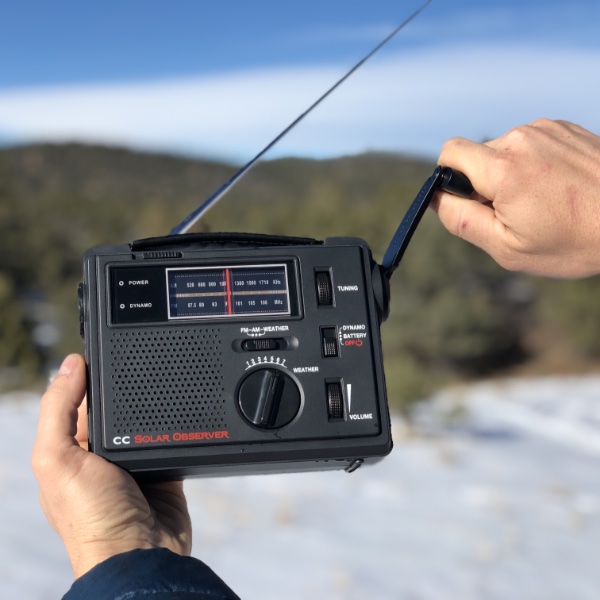When the SHTF it could be your ability to communicate and receive important information that keeps you save and even alive. That is the exact reason why you should par particular attention to how you will communicate should disaster strike. Here is a complete guide to emergency communication in a crisis or emergency situation.
A Comprehensive Guide to Emergency Communication in Crisis Situations

In today’s hyper-connected world, we heavily rely on our cell phones for communication. These sleek devices provide us with a lifeline to the world, allowing us to stay in touch with loved ones and access vital information with a simple tap. However, when disaster strikes, these seemingly indispensable gadgets can quickly become useless, leaving us isolated and in the dark. That’s why it’s crucial to have a solid emergency communication plan in place, a plan that goes beyond the limitations of modern technology.
The Fragile Nature of Telecommunications
While cell phones have become our primary means of communication, they are also incredibly fragile. Disasters, whether natural or man-made, can disrupt the delicate systems that keep our cell phones operational. The sudden loss of service or a drained battery can leave you without the ability to make vital calls or access crucial information.
Planning for Communication When Systems Fail
In an emergency, you must be prepared to communicate when your cell phone is down. Cell phones rely on working service, the internet, and a charged battery to operate. In times of crisis, these components may be unavailable. To ensure you can stay connected, you need alternative forms of communication. Here are some essential tools and methods to consider:
Amateur Radio
Amateur radio, also known as ham radio, is one of the most versatile forms of emergency communication. Licensed operators can communicate over great distances using voice, text, images, and data. While it may require some training and licensure, ham radio offers a reliable means of communication when all else fails.
Family Band Radios (FRS)
Family band radios operate on the UHF band and are available in most big-box and sporting goods stores. They are suitable for short-distance communication, making them handy for keeping in touch with family members in emergencies.
General Mobile Radio Service (GMRS)
GMRS radios offer a broader range than FRS radios, with some models providing up to 25 miles of coverage. Licensing is required to operate GMRS radios, and they are suitable for both short and medium-range communication.
Citizen Band Radio (CB)
CB radios operate on 40 channels near the top of the HF band. While handheld CB radios are less practical due to their need for long antennas, vehicle-mounted or base stations with external antennas can provide a range of up to 20 miles.
Satellite Phones
Satellite phones are invaluable for disaster communication as they bypass damaged terrestrial equipment by connecting directly to orbiting satellites. While they can be costly, emergency-only calling plans may be more budget-friendly.
Voice over Internet Protocol (VoIP)
VoIP technology allows you to make calls over the internet, and various providers offer voice and video services. VoIP is dependent on a high-speed internet connection, so it’s essential to have a reliable connection during emergencies.
Written Contact Information
Compiling a written list of essential contact numbers is vital. During high-stress situations, cognitive functioning can slow down, making it difficult torecall even frequently dialed numbers. Keep copies of this list in your emergency kit, workplace, vehicle, and any other relevant locations.
Additional Communication Considerations
Backup Power
Many communication devices require a power source, so plan for how you’ll keep them charged during power outages. Options include power banks, hand-crank generators, solar chargers, car chargers, and even portable power stations. Ensure you have the necessary cables and adapters.
Preparing Your Cell Phone
Your cell phone can still be a valuable asset during emergencies if you prepare it in advance. Specify an “In Case of Emergency (ICE)” contact, complete and update your contacts, store your emergency plan on your phone, download relevant emergency apps, and consider investing in a waterproof case.
Communication Equipment Protection
Communication devices are vulnerable to electromagnetic pulses (EMP) and geomagnetic disturbances (GMD) from solar flares. To protect your equipment, store it disconnected from grid energy sources, disconnect antennas, or keep them collapsed down. Consider using Faraday cages to shield your devices from these effects.
Conclusion
Effective communication during a crisis is essential for ensuring your safety and the safety of your loved ones. While cell phones are a convenient everyday tool, they are not infallible, and disaster can strike at any moment. By diversifying your communication methods and planning for contingencies, you can stay connected and informed, even when modern technology fails.
Remember, your emergency communication plan should be tailored to your needs, budget, and level of expertise. Whether you’re a seasoned ham radio operator or just getting started, having a range of communication options at your disposal can make all the difference when disaster strikes. Don’t wait until it’s too late—start preparing your emergency communication plan today.
This comprehensive guide has covered various communication methods, backup power options, and essential considerations to help you stay connected and informed during emergencies. By taking these steps and investing in your preparedness, you can navigate crisis situations with confidence and ensure that you and your loved ones remain safe and connected when it matters most.
Take a look at more prepper stuff here.
